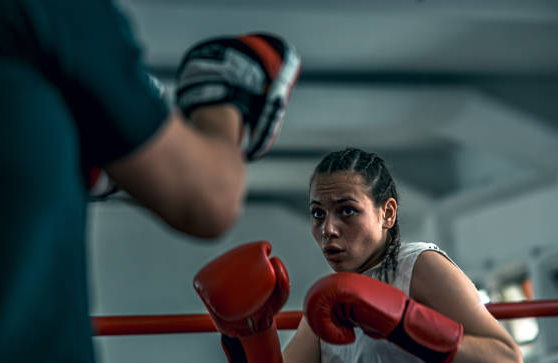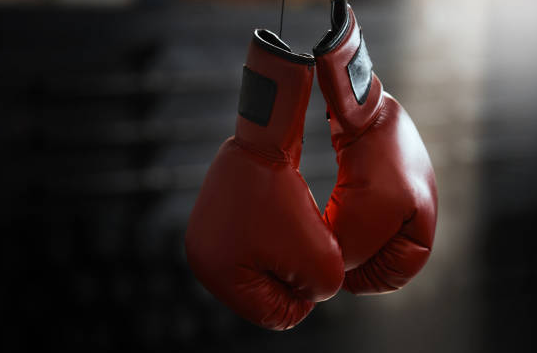For any boxer, whether a novice or a seasoned professional, choosing the right boxing glove size is crucial. Ill-fitting gloves not only affect performance but also increase the risk of injury. This comprehensive guide is designed to give you an understanding of the nuances of boxing gloves, from their history and construction to the different types available and how to choose the perfect size for your needs.
The Importance of Choosing the Right Boxing Glove Size
The right boxing glove size ensures optimal performance and safety. Gloves that are too tight can cause discomfort and restrict blood flow, while gloves that are too loose can shift during use, leading to incorrect posture and potential injury. Knowing how to choose your boxing glove size is crucial for both protection and efficiency in the ring. This guide to boxing gloves will help you through the process of choosing the ideal glove, ensuring that you get the best fit for your specific requirements.
The Evolution of Boxing Gloves
Boxing gloves have undergone significant evolution over the years. Initially, boxers used bare fists or simple hand wraps. At the end of the 19th century, the advent of padded gloves revolutionized the sport, providing boxers with better hand protection and reducing the incidence of facial injuries. Modern boxing gloves are designed with advanced materials and ergonomics to improve safety and performance.
Components and Construction of Boxing Gloves
A typical boxing glove is made up of several key components: the shell, which is usually made of leather or synthetic material; padding to provide cushioning; Wrist strap to secure gloves. The padding is usually made of high-density foam, which is designed to absorb and disperse the impact of boxing. The shell must be durable enough to withstand repeated blows, while the wrist strap ensures a snug fit that prevents gloves from slipping off during use.
The Importance of the Right Size
It is crucial to wear the correct size gloves. Ill-fitting gloves can lead to a range of problems, from poor performance to increased risk of injury. A boxing glove size guide can help you determine the right size based on your weight and hand size. This guide to boxing gloves is a must-have for anyone who wants to optimize their boxing experience, ensure safety and effectiveness.

Different Kinds of Boxing Gloves
Sandbag Gloves
Sandbag gloves are designed for sandbag practice. These gloves have less padding than other types of gloves and can feel the punch better. They are ideal for practicing the technique and strength of sandbags, speed sandbags, and pads. The lighter padding allows for more precise movements, making it a key tool in any boxer’s arsenal.
Multifunctional Training Gloves
Training gloves are versatile and are suitable for both sandbag practice and boxing practice. They strike a balance between protection and flexibility, making them an excellent choice for beginners and intermediate boxers. Training gloves are designed to be an all-rounder option that provides enough padding for boxing practice and is light enough for sandbag practice.
Protective Boxing Gloves
Boxing gloves are designed with extra padding to protect the wearer and sparring partner. These gloves are essential for practicing competitions, and their goal is to simulate real combat conditions without causing injury. The extra padding helps absorb the impact of boxing, making sparring safer and more efficient.
Professional Race Gloves
Race gloves are suitable for professional matches. These gloves are less padded and are designed to maximize the impact of boxing while still providing some protection. Race gloves are lighter in weight and allow for faster hand movements, which is essential in competitive environments.
Choose the Right Boxing Glove Size
Ensure the Right Fit for Safety and Performance
Choosing the right size boxing gloves is essential for optimal performance and safety. The right size ensures that the gloves remain in place, provide adequate protection, and allow for efficient transfer of energy during boxing. Knowing how to know what size boxing gloves to buy is crucial for any boxer.
Considerations for Choosing the Right Size
When choosing the right glove size, consider factors such as your weight, palm size, and the intended use of the glove. Heavier gloves offer more protection but can be bulky, while lighter gloves allow for faster movements. Using the boxing glove size guide can help you determine the best size for your needs.
Measure the Hand Circumference
To measure the hand size of a boxing glove, use a soft ruler to measure the circumference under the knuckles of your dominant hand. This measurement will help you determine the right glove size. If you’re in between two sizes, consider whether you prefer a tight fit or a loose fit. This choice will also affect your performance style, striking a balance between boxing power and speed.
Interpret the Glove Size Chart
Glove size charts are usually based on weight and hand circumference. These charts can guide you in choosing the right size of gloves. When interpreting these charts, make sure you take into account the type of gloves you need, as different gloves may have different size standards. This method of how to determine the size of a boxing glove will ensure that you choose a glove that is comfortable and performs well. By following this boxing glove guide, you can make an informed decision that will ensure that your gloves fit perfectly and elevate your boxing experience.

Boxing Gloves Size Guide
Choosing the right boxing glove size is critical to ensuring performance and safety. This boxing glove size guide will provide detailed recommendations based on weight class, specific use, and personal preference.
Boxing Gloves Size Weight Class Recommendations
Thinking about your weight class, you can easily understand how to choose the size of your boxing gloves. For people weighing less than 100 pounds, 8-10 ounce gloves are usually appropriate. These gloves are lightweight and can be moved quickly. People who weigh between 100-125 pounds should choose gloves in the 10-12 ounce range, which will strike a balance between speed and protection.
If you weigh between 125-150 pounds, 12-14 ounce gloves are recommended. These gloves provide more padding and protection, making them ideal for training and sparring. For people weighing between 150-180 pounds, 14-16 ounce gloves are suitable. These gloves provide adequate protection while still allowing for effective training. Finally, for people weighing more than 180 pounds, gloves of 16 ounces and above are recommended to ensure that hands and wrists are adequately protected.
Specific Sizes for a Variety of Glove Types
Different types of boxing gloves have specific size needs. Sandbag gloves are mainly used for hitting sandbags and are usually less padded and lighter, making them easier to handle. Training gloves are versatile and can be used for general training purposes, striking a good balance between protection and flexibility.
Boxing gloves are designed with extra padding to protect you and your sparring partner. These gloves are heavier and cushioned. Less padding is used in professional matches to maximize the punch of boxing. Knowing how to choose the size of your boxing gloves for these specific purposes is essential to optimize your training and performance.
Personal Fit Preference
Personal preference plays an important role when considering how to choose a boxing glove size. Some boxers prefer a tight-fitting model, which allows for better control and reduces movement inside the glove. Others may opt for a loose-fitting fit for added comfort, especially during long training sessions. This guide to boxing gloves highlights the importance of trying on different sizes and adjusting them to feel and comfort.
Other Tips for the Best Use of Gloves
Hand Wrap
Using hand guards is essential to stabilize your hands and wrists. The right hand straps can provide extra padding and support to help prevent injury. Learning how to properly bandage your hands is a key aspect of any boxing glove guide.
Glove Care
To prolong the life of boxing gloves, regular cleaning and proper care are essential. Wipe gloves after each use and make sure gloves are completely dry before storing. Avoid machine washing, especially leather gloves, and use appropriate cleaning products as recommended.
Trial and Error
When trying on gloves, be sure to wear gloves to ensure accurate measurements. Adjust to how the gloves feel during different activities, such as sandbag exercises or boxing exercises. This hands-on approach is essential to understanding how to effectively choose a boxing glove size.
Final Conclusions
Review the main points discussed: the importance of choosing the right glove size, specific size recommendations, and considerations for different types of gloves. Readers are encouraged to take the time to find the perfect glove for their needs. Properly sized gloves aren’t just about comfort; They play a vital role in performance and security. By following this comprehensive boxing glove size guide, you can ensure that your gloves fit perfectly and elevate your boxing experience.

